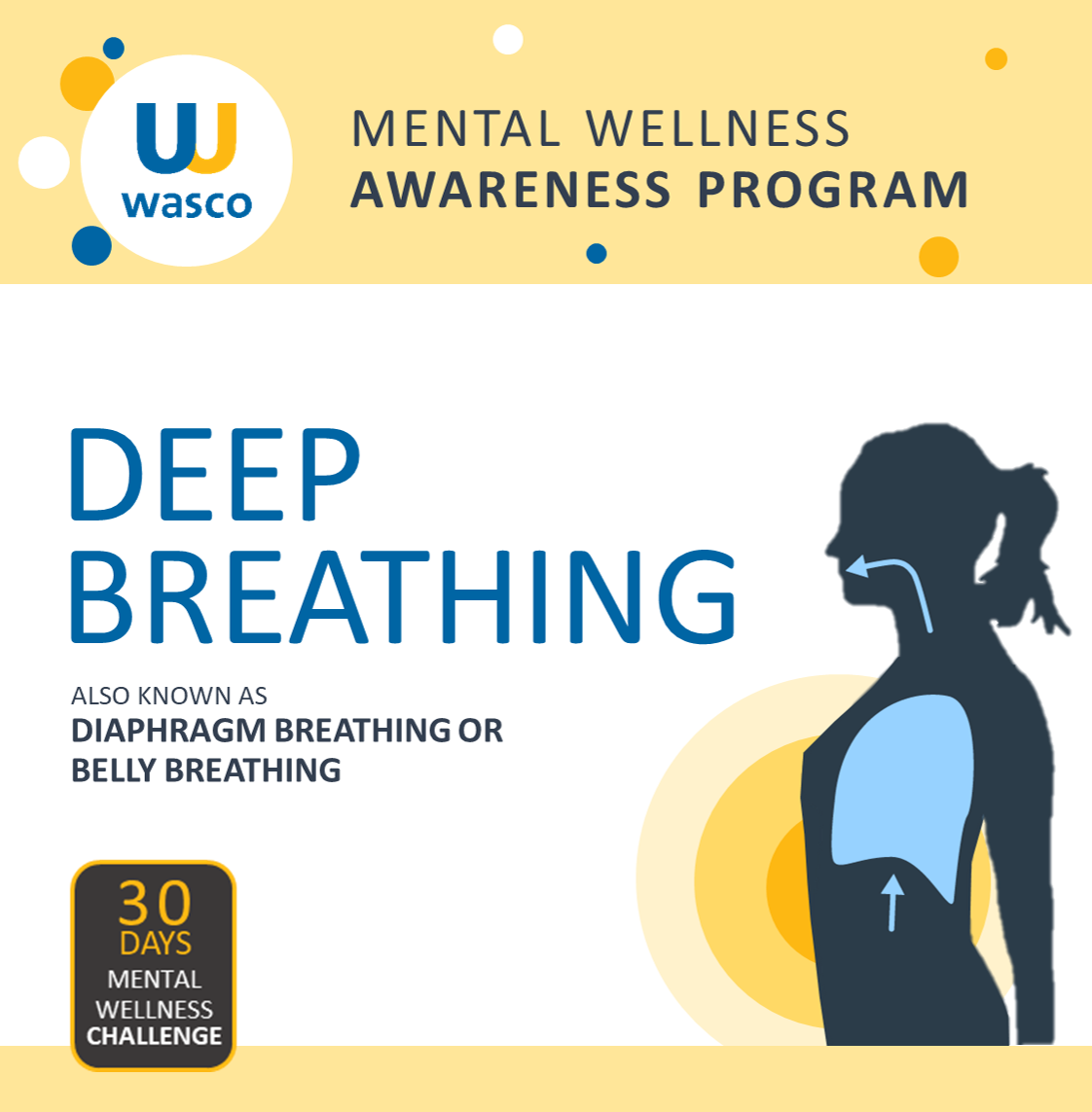- Improved blood return to the heart for ideal blood pressure and cardiovascular health
- Improved stamina for energy and athletic performance
- Improved flow of lymph resulting in a better immune function
- Improved relaxation response for less tension and overall sense of well being
- Improved worker alertness and situational awareness that leads to a safer workplace
- The Correct Way of Breathing 00:03:44
- Calming Breath 00:02:24
- Instant Focus Breath 00:02:09
- Visualization Breath 00:02:35
- Sleep Preparation Breath 00:02:08
- All Wasco employees
Using the Deep Breathing
technique, you will learn how to apply Situational Breathing Strategies in
multiple workplace scenarios such as:
Calming
Breath: During panic or stress situations to get to a calmer state. An
example would be hyperventilation due to overwhelmed feeling from imminent or
current high mental/physical discomfort.
Instant
Focus: When immediate focus is necessary. An example would be starting a
physical or mental competitive event, conducting surgery on a patient, and
pitching a complex idea to your client or co-worker.
Visualization
Breath: Managing performance anxiety. Example situations would be when we
are nervous or anxious just before we are about to speak publicly. Often we
hold our breath when doing anything mentally or physically taxing.
Sleep
Preparation: Right before you sleep.
-
 Sun, 31-Oct-2021Mel Whyte
Sun, 31-Oct-2021Mel Whyte -
 Mon, 01-Nov-2021Vivian Tay
Mon, 01-Nov-2021Vivian Tay -
 Tue, 02-Nov-2021Intan Suhartini Shari
Tue, 02-Nov-2021Intan Suhartini Shari -
 Fri, 05-Nov-2021Sharmilee Sagadavin
Fri, 05-Nov-2021Sharmilee Sagadavin -
 Sun, 27-Feb-2022Siti Sibuea
Sun, 27-Feb-2022Siti Sibuea -
 Wed, 22-Nov-2023Vini Sreenivasan
Wed, 22-Nov-2023Vini Sreenivasan -
 Mon, 07-Oct-2024Muhammad Noman
Mon, 07-Oct-2024Muhammad Noman

Write a public review